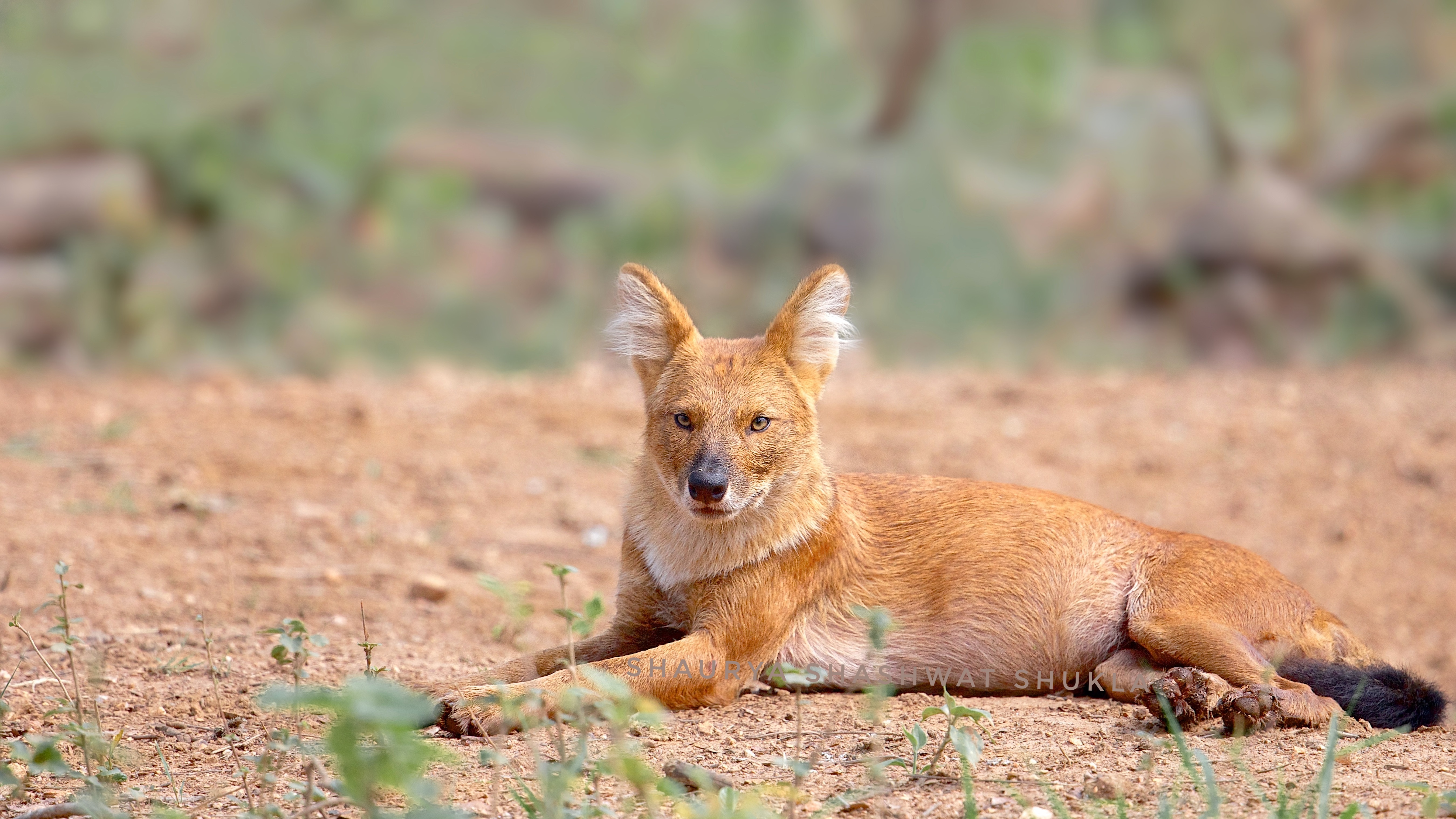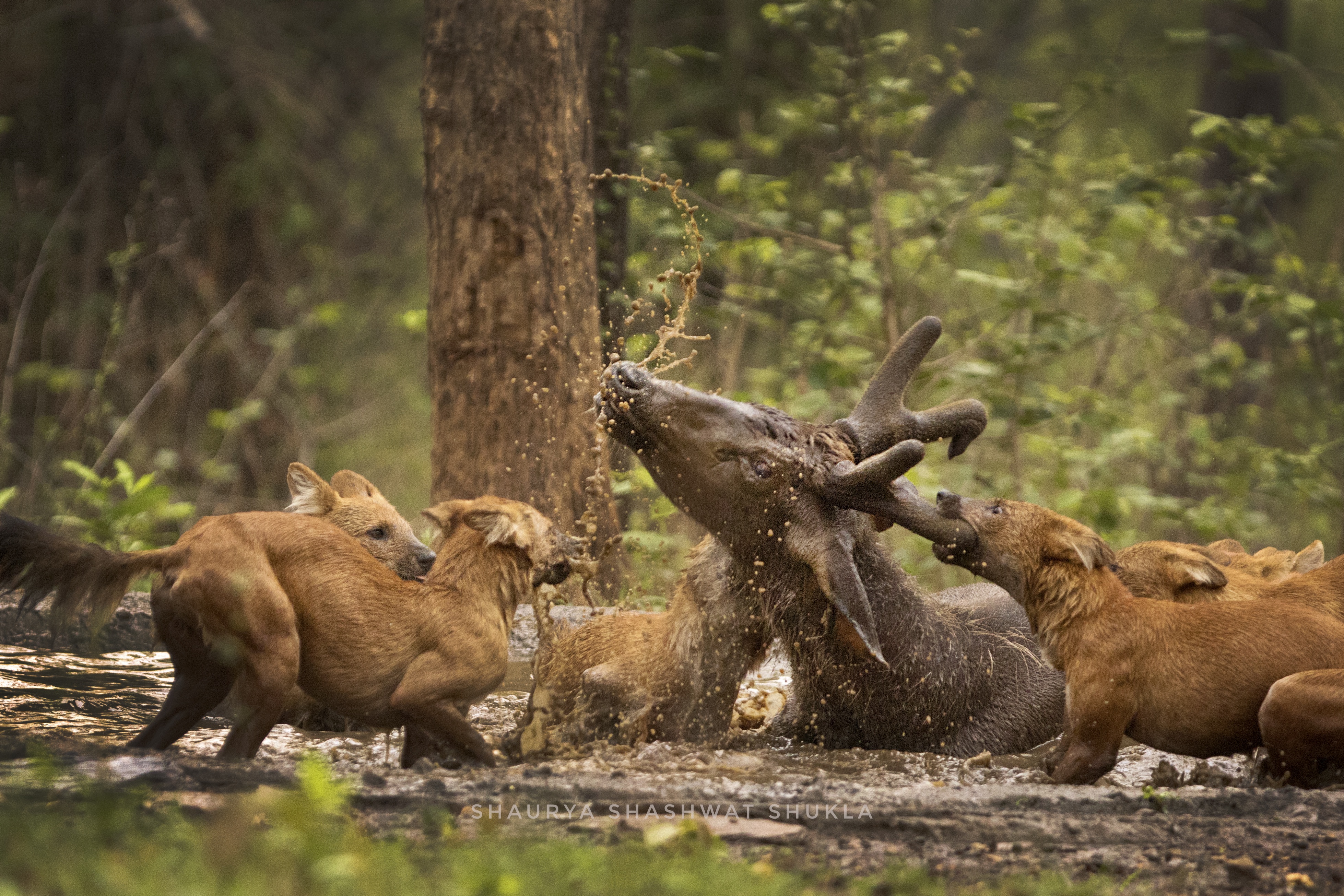
As human beings, most of us love dogs. They are adored by so many that dogs are referred to as a human’s best friend. In Nepal, we worship and celebrate them during Kukur Tihar with treats and garlands. But how many of us have heard about dholes, a breed of wild dog found in Nepal?
Dholes, also known as Asiatic wild dogs, are a species of wild canid native to South and Southeast Asia. They are highly social animals that live in packs and are renowned for their cooperative hunting strategies. Recently, Nepal’s police is even using them during investigations of crimes.
But dholes are on the verge of extinction worldwide and they are listed on the IUCN Red List of Threatened Species. In a bid to save them from extinction, various conservation programmes and studies are being conducted but this campaign needs a collective effort from locals and conservationists.
A week-long conference took place in Sauraha in Chitwan from June 1 where scientists and conservationists from 18 countries including those from Nepal participated.
The conference aims at understanding the need for conserving dholes and creating a dhole conservation action plan so as to force the government to develop the necessary human resources and technology to conserve these wild dogs.
Dhole conservation campaigns

As of now, the Dhole Working Group (consisting of 19 members) under the Candid Specialist Group of IUCN has been working in the area for the worldwide protection of the dholes.
As per the report of the Dhole Working Group (DWG) under the Candid Specialist Group, there are 4,500 to 10,500 in the world out of which 989 to 2,215 are expected to be adults.
In the case of Nepal, the number of dholes is expected to be around 100, which are found in national parks under Chure conservation areas, some community forests and national parks around the Himalayan region.
The government and NGOs are engaged in environmental and wildlife protection projects. But, given that most of the projects are budget oriented and centred towards the protection and increasing numbers of large animals such as tigers, elephants, rhinos etc, concerns about even the basic protection of endangered animals like dhole are neither heard nor seen.
According to Ambika Prasad Khatiwada, the coordinator of the conference and dhole conservation activist, the conference in Sauraha will be assisting the government in policymaking by making a work plan for the conservation of endangered dholes and creating a dhole conservation action plan.
Sujan Khanal, another dhole activist, points out the paramount contribution of dhole in keeping a balance on the ecological system and as these wild dogs lie in the middle of the food chain. Any decrease in the number of dholes would lead to an uncontrollable increase in the number of herbivorous animals as it feeds on deer, swamp deer, chital, hog deer, wild boar, gaur, etc. leading to a problematic situation for humans.
Dholes usually prey on aged and diseased animals because strong and robust deers are too quick for them. Because of that, only the strong wild animals stay in the forest who breed healthy children and their number also continues to grow.
Khanal also claims that this way, it is clear that dholes have been contributing to selecting healthy wildlife in the forest.
Dhole’s physical features and its natural habitat
With broad round ears, a dark mouth and a reddish-brown appearance, the animal is very thin around the waist. It is physically very active and quick and has a thick bushy tail with a dark-coloured tip.
Those having white collars have mostly shorter limbs and are white/yellowish in appearance. Depending on the place and local tongue, this endangered mammal is also known by the name of bwaso, bansa kutta, ban nagi, etc in the local dialect. Seeing its long skeleton and thin limbs, some people even call it a cat. It even looks like a hyena at first glance.
While erect, the animal measures as tall as 12-17 inches and as long as three feet. It commonly takes shelter in caves and between the rocks around water resources. While the adult/alpha female weighs around 16 Kg, the alpha male is almost 21 Kg. Its average life expectancy ranges from around 15-16 years.
It mostly lives in groups of around five to 10. Unlike wolves, these wild dogs do not attack humans. It prefers seclusion and privacy and which is why they are rarely seen around human settlements. However, due to the recent spike in human settlements and activities around the buffer zones, these peace-loving creatures have been suffering from undue distress.
Dholes make sisi… sound the way humans do. They communicate among themselves by whistling. Yelling, meowing and even producing the sound of a hen, these creatures have an interesting ability to imitate other creatures. Humans know very little about these interesting creatures. They produce kaka..kaka.. sound while hunting prey whereas the young ones produce a distinct sound while asking for food.
Dholes are naturally good at swimming as 70 to 80 per cent of their prey lives in water. That is why they are mostly seen around wetlands, rivers and grasslands.
Unlike tigers and leopards, these creatures do not live in dense forests. They are among a very limited number of species that eat before their young ones do. Conflict among the groups is a rare occurrence.

Each group is led by a pair of dholes known as an alpha couple or simply team leader. Alpha males and alpha females take turns chasing their prey down. When one gets tired, the other takes the lead. Dholes are known for their impeccable hunting skills.
They are known to kill their prey by chasing them far and wearing them out. They even prey on animals like Gauri Gai (Indian bison), yak and wild boar, which are all four to 10 times bigger in size. They have the ability to run at the speed of 30 mph.
Unlike most predators, they do not attack the throat of their prey. They attack in packs and surround the prey and then start eating from the tail area while the prey is still alive. It is in their hunting nature to jump and feast on the prey from behind. In some events, they may even target the eyes of the prey and make them blind before eating them. Surprisingly, these creatures even eat grass, herbs and leaves, not necessarily to recover from illness but simply for fun (to improve digestion).
Their breeding season starts in September every year. A healthy female alpha is capable of reproducing up to 12 young ones. Their pregnancy period usually ranges between 60-63 days. During this period, the pack brings food up to the pregnant one living in the den.
The young ones after attaining the age of six months join the adults in the hunt and by the time, they are eight months old, they are capable of hunting deer.
Dholes do not urinate taking their one leg up like the common dogs. They raise both their limbs up. The smell of urine is an identity of the dog species. What is interesting is the smell of urine varies from animal to animal. While the common dogs have been known to mark their territory with the help of urine, the same has not been found in the case of dhole. This fact alone separates the dhole from the rest of the species of dog.
Humans and wildlife have had a deep relationship for ages. Every single animal is equally responsible for the maintenance of a healthy ecosystem. The food chain has woven them into a common web. The message is clear: Let’s create a wild dog-friendly environment in and around the national parks and conservation areas. Wild dogs are more precious alive than dead. Therefore, protect them.


















